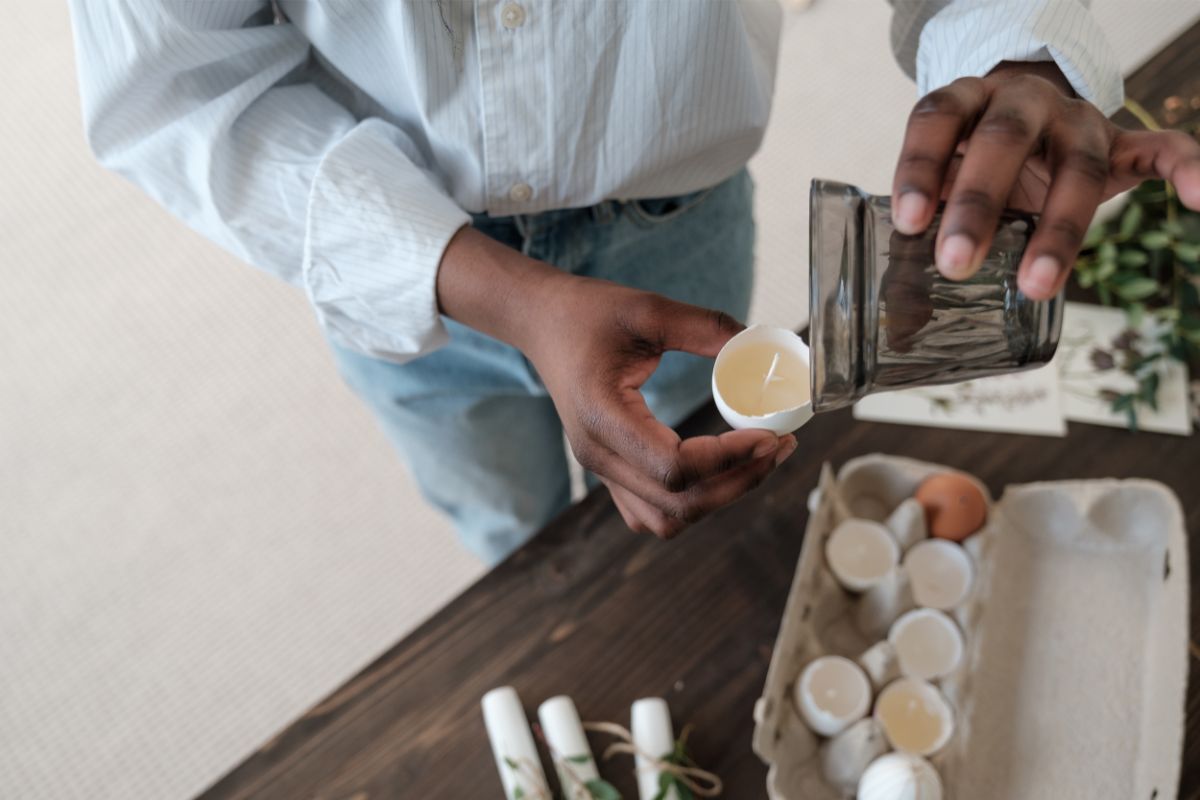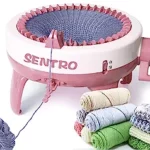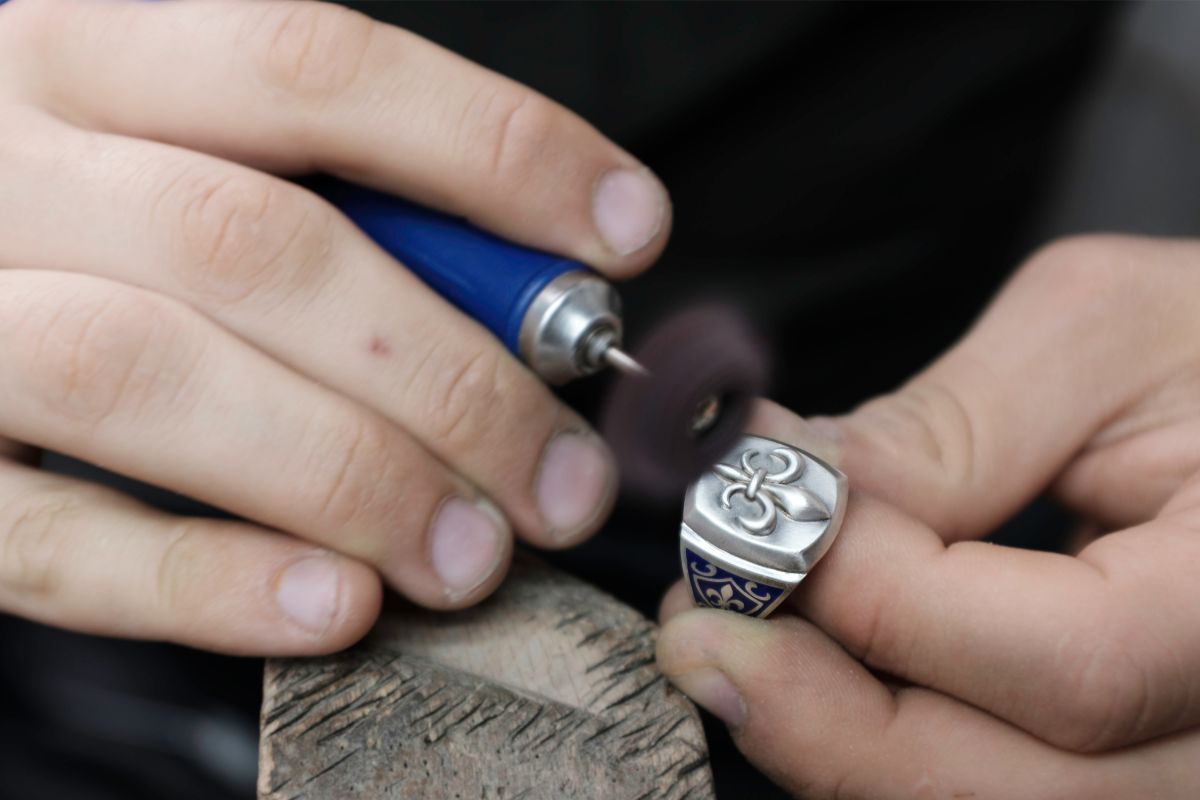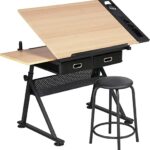
What is a knitting loom?
Having a knitting loom can be a great way to relax after a busy day at work or school. You can make beautiful, handmade pieces with ease and there’s no need to worry about dealing with sharp needles or complicated patterns. With just a few basic materials and a little bit of practice, you’ll soon find that you’re creating gorgeous items in no time. Think of the possibilities... sweaters for winter, hats for summer, blankets for your couch…the list is endless!
Not only are they perfect gifts for special occasions, but they also make wonderful keepsakes that will last for years to come.
Plus, the satisfaction of making something yourself can be unbeatable! Not to mention the cozy atmosphere that having a dedicated knitting corner in your home can bring.
Imagine walking into your living room on those cold days and seeing your lovely hand-knitted creations displayed proudly on an armchair or draped over an ottoman. Whether you’re alone or with friends, it will be like stepping into your own personal cocoon of warmth and love. If all this has convinced you to invest in a knitting loom, there are plenty of options available out there – from classic looms made from wood and metal to modern tools such as looms with adjustable pegs and plastic frames.
Additionally, there are plenty of resources online that offer step-by-step instructions and tips on how to get started with loom knitting project ideas from accessories like scarves and mittens to larger projects like sweaters or blankets. Now all you need is some yarn and let the creative juices flow!
What is a knitting loom and what is it's purpose?
A knitting loom is a specialized tool used in the craft of knitting. It consists of a frame or circular structure with pegs or pins evenly spaced along its circumference. The loom is typically made of plastic, wood, or metal and comes in various shapes and sizes, such as round, rectangular, or oval.
The purpose of a knitting loom is to create knitted fabrics or items without the need for traditional knitting needles. It provides an alternative method for individuals who may have difficulty using needles or prefer a different technique. The loom allows for the creation of various items, including hats, scarves, socks, blankets, and even garments.
Using a knitting loom involves wrapping yarn around the pegs or pins in specific patterns, then manipulating the yarn with a specialized hook or needle-like tool called a loom hook. The process is repeated across the pegs, creating rows of knitted stitches. The fabric grows as more rows are added, forming a knitted piece.
Loom knitting is versatile and accessible, making it suitable for beginners and experienced knitters alike. It offers a slower pace and simplified technique compared to traditional knitting, making it easier to grasp for newcomers. Additionally, loom knitting allows for the production of larger projects with less hand strain and quicker results.
Overall, a knitting loom provides a user-friendly alternative to traditional knitting needles, enabling individuals to enjoy the art of knitting and create beautiful handmade items with ease.
Describe how a knitting loom works and the benefits of using one
A knitting loom is a tool that simplifies the process of knitting by replacing traditional needles. It consists of a frame with evenly spaced pegs or pins. To use a knitting loom, the knitter wraps yarn around the pegs, following a specific pattern or design. This creates rows of wrapped yarn. Then, using a loom hook or knitting tool, the knitter lifts the bottom loops over the top loops on each peg, forming knitted stitches.
Using a knitting loom has several benefits. Firstly, it is easier to learn and suitable for beginners or individuals who struggle with traditional knitting needles. The loom's pegs hold the yarn in place, reducing the chances of dropped stitches. It also allows for slower pacing and better visibility of the stitches, making it helpful for those with limited dexterity or visual impairments.
Loom knitting is more ergonomic, as it eliminates the repetitive hand motions required by traditional needles, making it suitable for people with arthritis or hand-related conditions.
Additionally, knitting looms can accommodate larger projects, such as blankets or garments, without the need for complex shaping techniques.
List different types of looms available and their uses
There are several types of knitting looms available, each with its own unique design and purpose. Here are some of the most common types:
Round Loom

These looms are circular in shape and have pegs evenly spaced along the circumference. They are primarily used for creating seamless projects like hats, cowls, and circular shawls.
Long Looms

Long looms are rectangular or straight in shape, with pegs running parallel along the length. They are suitable for making scarves, blankets, and panel-style projects.
Sock Looms

Sock looms are specialized looms designed specifically for knitting socks. They usually have a slender, elongated shape and come with a smaller number of pegs to create the tube-shaped sock.
Afghan Looms

These looms are wider and longer than traditional looms, allowing for the creation of larger projects like afghans or blankets.
Knitting Board

A knitting board is a double-sided loom with pegs on both sides. It is used to create double-knit fabrics and reversible projects like scarves and blankets.
Flower Looms
Flower looms are small, circular looms with pegs that enable the creation of decorative flower motifs. They are often used for embellishments on garments or as standalone decorative pieces.
Weaving Looms

While not knitting looms, weaving looms are used to create woven fabrics. They come in various types, such as frame looms, rigid heddle looms, and floor looms, and are used for weaving textiles like rugs, tapestries, and cloth.
Each type of loom offers unique possibilities for knitting different projects, allowing knitters to explore various techniques and create a wide range of items.
So... what are thekey points about learning to knit with a loom
Learning to knit with a loom offers several key points that make it an appealing option for beginners and experienced knitters alike.
- Accessibility: Loom knitting is generally easier to learn than traditional needle knitting, making it accessible to individuals of all ages and skill levels. The loom's pegs hold the yarn in place, reducing the risk of dropped stitches and providing better control for beginners.
- Simplified Technique: Loom knitting simplifies the knitting process by eliminating the need for complex needle maneuvers. Wrapping the yarn around the pegs and using a loom hook to create stitches is a straightforward technique that is easier to grasp and execute.
- Ergonomics: Using a loom eliminates the repetitive hand motions required by traditional needles, making it more comfortable for people with arthritis, joint pain, or limited hand mobility. Loom knitting is also gentler on the wrists and hands, reducing strain and fatigue.
- Versatility: Looms come in various sizes and shapes, allowing for the creation of different projects. From hats and scarves to blankets and socks, a loom can accommodate a wide range of items and stitch patterns.
- Speed and Results: Loom knitting often progresses faster compared to traditional needle knitting. The larger size of looms and the simplified technique can result in quicker completion of projects, providing a sense of accomplishment and satisfaction.
In summary, learning to knit with a loom offers accessibility, a simplified technique, improved ergonomics, versatility in project options, and the potential for faster progress, making it an attractive choice for individuals interested in the craft of knitting.
To find out more about knitting, please visit any of the following areas:
- How to sew together knitting
- What is brioche knitting
- How to join yarn in knitting
- How to join in the round knitting
- How to finish a knitting scarf
- How to make a slip knot for knitting
- How to switch colors knitting
- How to hold yarn when knitting
- What does kfb mean in knitting
- How to fix a dropped stitch in knitting
- How to hold knitting needles
- What is frogging in knitting?
- How to change colors in knitting
- How to count rows in knitting
- How to increase in knitting
- How to slip stitch knitting
- How to yarn over in knitting
- What is a knitting loom?
- How to make bobbles in knitting?
- Where can I buy sentro knitting machine?
- What can you make with a sentro knitting machine?
- Cricut Hat Press: A Comprehensive Guide on Usage - August 13, 2023
- Unlocking Creativity with the Cricut Joy: A Comprehensive Guide - August 12, 2023
- The Ultimate Guide to the Cricut Maker Bundle - August 11, 2023
















